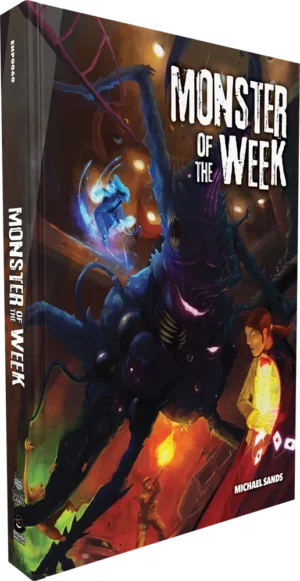Tales from the Loop Science Fiction; Environmental; Narrative-Driven; Exploration-Driven; Character Customization; Collaborative Worldbuilding; Streamlined
Tales from the Loop is a tabletop roleplaying game set in an alternate 1980s where advanced technology exists alongside everyday life, creating unique mysteries for players to solve. Players take on the roles of teenagers dealing with both mundane problems and extraordinary events tied to a massive particle accelerator known as the Loop. The game emphasizes narrative, exploration, and collaborative worldbuilding, offering a streamlined ruleset and a focus on character development and emotional engagement, targeting both younger and older audiences. The gameplay is designed to evoke a sense of nostalgia and wonder, reminiscent of classic science fiction films, while also exploring themes of childhood, responsibility, and the impact of technology on society.
Theme and Setting
Tales from the Loop plunges players into an alternate version of the 1980s, a world infused with advanced technology born from massive underground particle accelerators. These accelerators, known as 'the Loop,' are located in Sweden and Nevada, and serve as the focal point for the game's strange and wondrous mysteries. The setting blends the mundane with the extraordinary, where everyday life is juxtaposed with robots, magnetic vehicles, and remnants of failed scientific experiments. This creates a unique atmosphere of nostalgia and eerie wonder.
The game master is also given tools to create a Loop setting in their own hometown. This is accomplished through a step-by-step guide to help build out all areas of the setting, including NPC's and adventure plothooks.
Things from the Flood serves as a sequel campaign to Tales from the Loop, following the same setting but with the teenage characters being older and having access to more technology and options to explore.
Core Mechanics and Rules
Tales from the Loop employs a streamlined version of the Year Zero Engine. Character creation emphasizes storytelling and personal connection to the setting. Players choose character types like 'Bookworm,' 'Jock,' or 'Troublemaker,' assigning points to attributes and skills. A player will roll a pool of six-sided dice based on their attributes and skills, with each six rolled counting as a success. The game mechanics allow for strategic dice manipulation, and players can gain bonus dice through items, character backstory elements, or aid from their friends. Luck points can also be spent to reroll dice or to push a roll and gain a bonus.
The game handles failure by imposing conditions such as 'Scared' or 'Injured,' which negatively affect future rolls until the character takes time to recover.
It is really clear in the game that, while player characters may get hurt or could be in danger, they never die.
Character death is not a possibility. When characters turn 16, they retire from being player characters.
What Makes it Unique
Several factors contribute to the uniqueness of Tales from the Loop:
- Setting: The alternate 1980s setting, inspired by the artwork of Simon Stelenhag, is both nostalgic and unsettling, creating a distinct atmosphere.
- Focus on Narrative: The game prioritizes storytelling and collaborative worldbuilding over complex combat mechanics.
- Character Archetypes: The familiar teen archetypes create instantly relatable characters.
- Player Agency: Players actively shape the narrative through scene setting and collaborative problem-solving.
- Coming-of-Age Themes: The game explores themes of childhood, friendship, and responsibility, resonating with both younger and older players.
- No Character Death: Focuses on the consequences of failure rather than permanent removal from the game.
- Collaborative Worldbuilding: The game focuses on how individual players contribute to the world and setting and make it feel alive and immersive for the group.
Target Audience and Player Experience
Tales from the Loop is designed to appeal to a wide audience, including:
- Teenagers: The coming-of-age themes and relatable characters resonate with teenage players.
- Adults: Adults who grew up in the 1980s can enjoy the nostalgia and the exploration of childhood memories.
- Fans of Science Fiction: The game's science fiction elements and mystery-solving gameplay appeal to fans of the genre.
- New RPG Players: The streamlined ruleset and focus on narrative make it accessible to newcomers.
The player experience is described as emotional, fantastical, and realistic, creating a memorable and engaging gaming experience that focuses on a blend of childhood adventure and solving complex mysteries.



